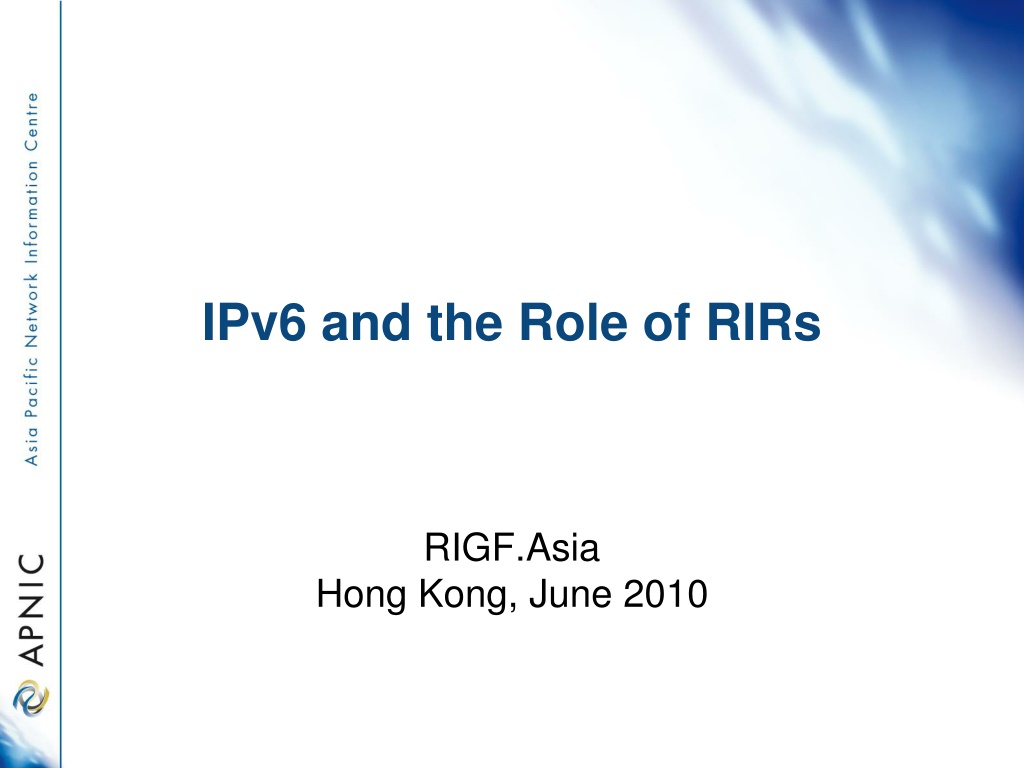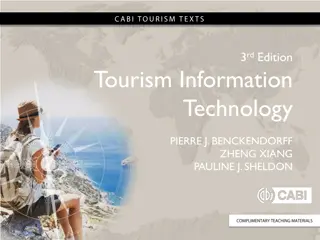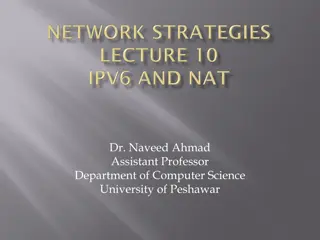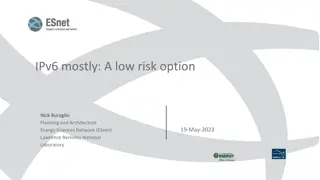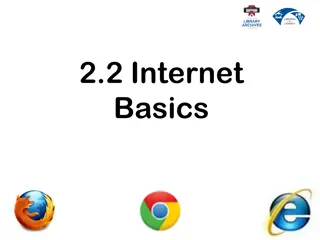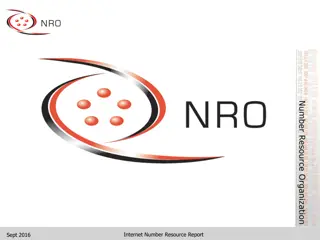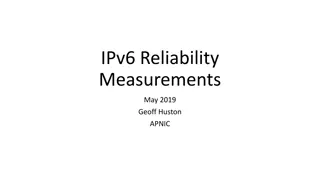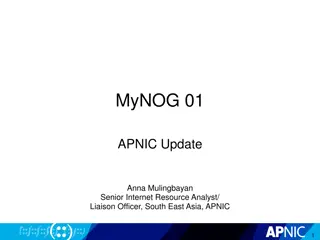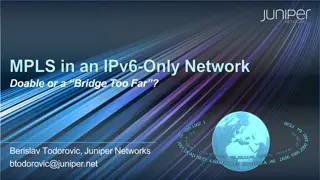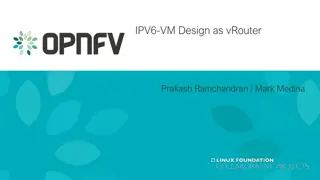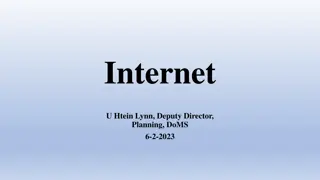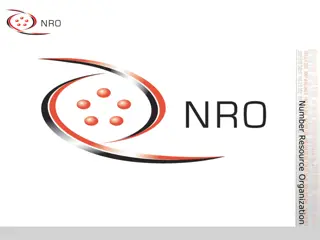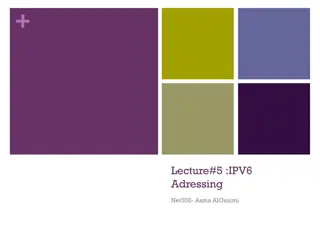IPv6 and the Role of RIRs in Internet Evolution
This content discusses the transition from IPv4 to IPv6, the projected exhaustion of IPv4 addresses, global distribution of IPv4 addresses, efforts to mitigate IPv4 consumption, and the inevitable need for IPv6 adoption. It provides insights into the challenges faced by Regional Internet Registries (RIRs) in managing address allocations and highlights the importance of stakeholders coming together to facilitate a smooth transition. The timeline, issues, and potential strategies for addressing the IPv4 address depletion are explored in detail.
Download Presentation

Please find below an Image/Link to download the presentation.
The content on the website is provided AS IS for your information and personal use only. It may not be sold, licensed, or shared on other websites without obtaining consent from the author. Download presentation by click this link. If you encounter any issues during the download, it is possible that the publisher has removed the file from their server.
E N D
Presentation Transcript
IPv6 and the Role of RIRs RIGF.Asia Hong Kong, June 2010
Internet fundamentals Open network, open standards Developed within IETF system (RFC series) TCP/IP, DNS, DHCP, HTTP, IPSEC, etc etc Dumb network global p2p datagram service IP over Everything Layered networking model (a la OSI) Relying on ITU and IEEE standards Serial line, Modem, Ethernet, ISDN, xDSL, cable/fibre, MPLS, 802.11x, Mobile 2G/3G Platform for competition and innovation Great benefits to consumers 2
The Protocol Hourglass Phone/Fax/SMS TV/VOD/conf The Internet Applications Network Video Voice Data Fixed, Dialup/ISDN Mobile/2G Cable/ADSL Infrastructure 3
The Hourglass Tomorrow Voice, email, IM Video, TV, conf WWW+++ Applications Network IP 802.11*/WiMax Mobile/3G Cable/*DSL FTTH, ETTH Infrastructure 4
Projected IPv4 Lifetime Projected IANA exhaustion: Projected RIR exhaustion: 11/08/2011 17/04/2012 5 http://www.potaroo.net/tools/ipv4 16 June 2010
IPv4 Address Global Distribution < 8% 18 Available 20 AfriNIC 2 APNIC 36 Reserved by IETF 35 ARIN 33 LACNIC 6 RIPE 30 Pre-RIR 92 May 2010 6
IPv4 Consumption Mitigation Many approaches discussed in regional meetings Policy and procedural measures adopted Some policies regional, some global Hard landing: The do nothing approach Too much risk for serious consideration Soft landing: measures to extend lifetime Rationing (eg /8 last block) Stricter justification requirements Reclaiming unused IPv4 addresses Transfer policies
Transition to IPv6 IPv4 address exhaustion is inevitable August 2011: IANA allocates the last /8 August 2012: APNIC is the first RIR to exhaust its IPv4 address pool IPv6 should be inevitable The only solution to IPv4 exhaustion Protocol is 10 years old Under a news spotlight for at least 18 months The transition Requires all stakeholders to act, but differently Will take 10+ years to complete 8
IPv6 Address Management RIRs continue providing equitable services to the Internet community A stable and proven structure for 20 years Address management is not the issue in IPv6 deployment Policies are stable and unrelated to deployment All efforts should go to IPv6 deployment In the core (ISPs, vendors) At the edges (users, software developers) Governments: Policies and procurement 9
IPv6 is Here! IPv6 is no longer experimental IPv6 is now in commercial use Signification acceleration in deployment over past year The main questions have answers 10
Chicken or Egg? Google has quietly turned on IPv6 support for its YouTube video streaming Web site, sending a spike of IPv6 traffic across the Internet 1 Feb 2010 Networld Monash University, Melbourne, Australia:
Whats the Killer App for IPv6? The Internet ! 12
Sometime in 2012 ISPs will need addresses for new network infrastructure and will receive only IPv6 End users will start receiving IPv6 Internet services With or without private IPv4 addresses Enterprises and businesses will get IPv6 for their new networks Customer NAT will apply to IPv4 All Internet users will be affected What will you need to do? 13
RIRs and Internet Governance Open, bottom up, neutral, non-profit, multistakeholder organisations Predating ICANN by many years Supporting the ICANN model, and ICANN itself Satisfied with IANA arrangements at present Participating in IG forums and discussions RIRs individually and collectively (as NRO) WSIS, WGIG (some ECOSOC accredited) ITU-T and ITU-D (some sector members) Many regional activities and forums IGF and MAG: long record of participation and financial support we support continuation.
Historical Note What is a Critical Internet Resource? Informal survey, November 2007 http://archive.apnic.net/news/docs/cir-pwilson-20071112.pdf
Thank you Paul Wilson Director General, APNIC pwilson@apnic.net
